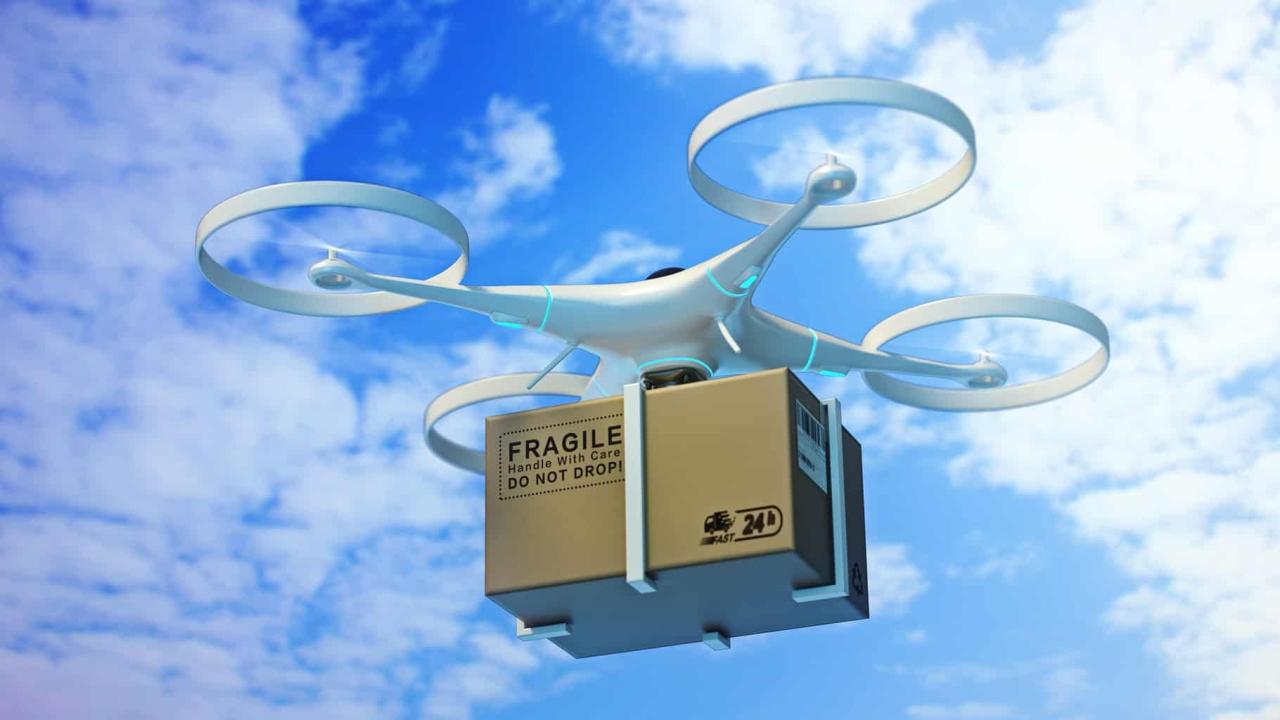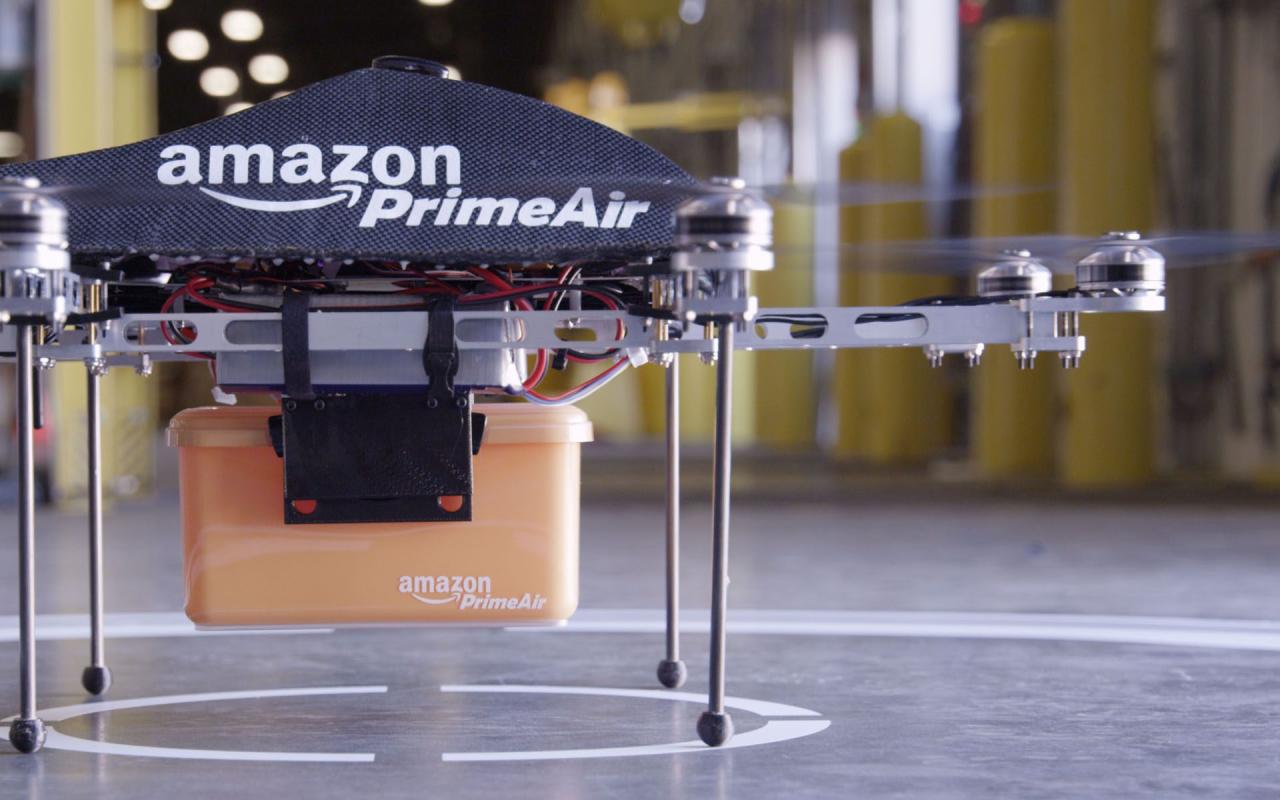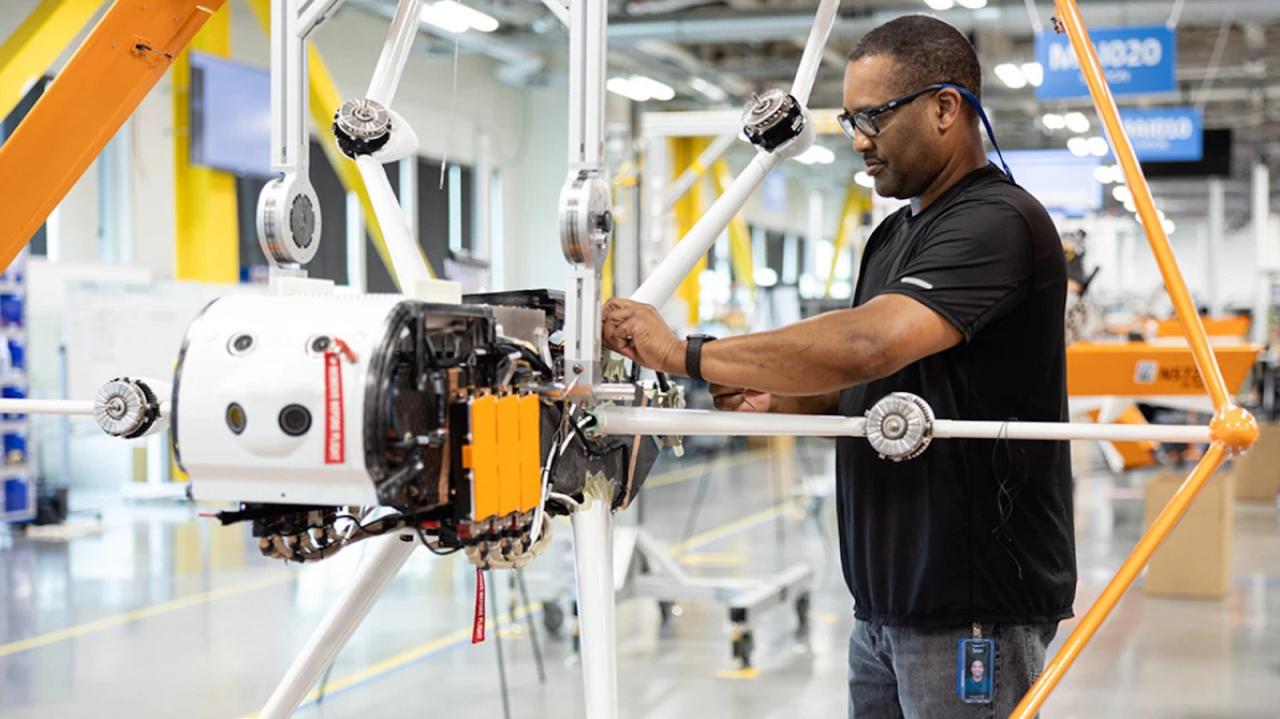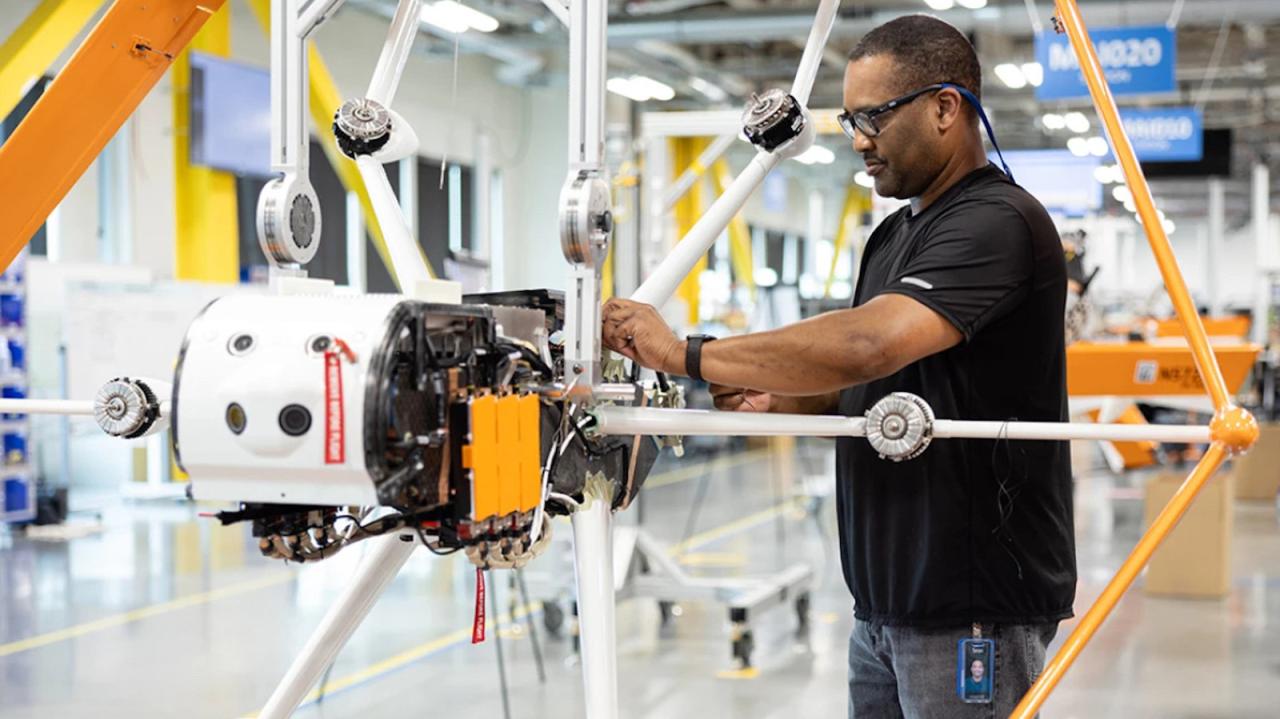Amazon drone delivery locations are rapidly expanding, revolutionizing how we receive packages. This guide delves into the current state of Amazon’s drone delivery program, exploring the factors influencing location selection, the customer experience, environmental considerations, and the exciting future of this technology. We’ll uncover the logistical challenges, regulatory hurdles, and technological advancements shaping this innovative delivery method.
From understanding the types of packages eligible for drone delivery to examining the technological infrastructure required, we’ll cover everything from population density and airspace regulations to the potential environmental impact and customer concerns about safety and privacy. We’ll also compare Amazon’s efforts to similar initiatives and predict future expansion based on technological advancements and evolving regulations.
So you’re curious about where Amazon’s delivering packages with drones? They’re testing out various locations, focusing on areas with good infrastructure and manageable airspace. Think about the precision needed – it’s similar to the amazing choreography in the Niagara Falls drone show , only instead of a dazzling spectacle, it’s delivering your new toothbrush. Ultimately, Amazon’s aim is to expand drone delivery to more locations as technology and regulations improve.
Amazon Drone Delivery Program: A Deep Dive into Locations: Amazon Drone Delivery Locations
Amazon’s drone delivery program represents a significant leap in logistics, promising faster and more efficient package delivery. This exploration delves into the current state of the program, the factors influencing location selection, customer experience, environmental and regulatory considerations, and future projections.
Current Amazon Drone Delivery Program Status
Amazon’s drone delivery service, officially known as Amazon Prime Air, currently operates within a limited geographical scope. Delivery is primarily concentrated in select areas of the United States, with a focus on suburban and rural communities where regulatory hurdles and population density are less challenging. The types of packages eligible for drone delivery are typically smaller, lighter items that can be safely transported within the drone’s weight and size limits.
This often includes everyday items like books, electronics, and small household goods. The technological infrastructure underpinning this service includes a sophisticated network of drone hubs, advanced flight control systems, and real-time monitoring capabilities. This network ensures safe and efficient drone operation, relying on GPS, sensors, and communication networks for navigation and data transmission. Compared to other drone delivery initiatives, Amazon Prime Air stands out due to its scale and integration with Amazon’s existing logistics network.
While other companies are experimenting with drone delivery, Amazon’s substantial resources and market penetration give it a significant advantage. However, expanding the drone delivery network presents numerous challenges, including regulatory approvals, airspace management, public acceptance, and the need for robust infrastructure in diverse geographical areas. Key challenges include navigating complex airspace regulations, ensuring drone safety and security, and addressing public concerns about noise pollution and privacy.
Factors Influencing Location Selection for Drone Delivery
Several key logistical factors determine suitable locations for Amazon’s drone delivery service. Population density plays a crucial role, as densely populated urban areas present unique challenges in terms of airspace management and safety. Areas with well-established communication networks and readily available airspace are preferred to ensure reliable drone operation and communication. The existing infrastructure, including airspace regulations, communication networks, and the availability of suitable drone landing zones, significantly impacts location selection.
Suburban and rural areas often prove more suitable initially due to less congested airspace and simpler regulatory environments. However, the potential for increased delivery volume in urban areas makes them a long-term target for expansion.
| Criterion | Urban Suitability | Suburban Suitability | Rural Suitability |
|---|---|---|---|
| Airspace Congestion | Low | Medium | High |
| Population Density | High | Medium | Low |
| Infrastructure Availability | High | Medium | Low |
| Regulatory Complexity | High | Medium | Low |
| Delivery Demand | High | Medium | Low |
Customer Experience and Drone Delivery Locations

Receiving a package via drone delivery offers a unique customer experience. Customers are typically notified via the Amazon app about the impending delivery, including an estimated delivery time and a real-time tracking of the drone’s location. Benefits include faster delivery times and a convenient, contactless delivery method. Drawbacks may include limited package size and weight restrictions and potential delays due to weather conditions.
Communication primarily happens through the Amazon app, providing updates and notifications. If issues arise, customers can contact Amazon customer service through various channels, including phone, email, or chat.
- Concerns about package security and theft
- Privacy concerns regarding drone surveillance
- Safety concerns about drone malfunctions or accidents
- Concerns about the environmental impact of drone operations
- Concerns about noise pollution from drone flights
Environmental and Regulatory Aspects of Drone Delivery Locations

Drone delivery operations have environmental implications, primarily concerning noise pollution and energy consumption. Noise pollution is a significant concern, particularly in residential areas. Regulatory frameworks governing drone operations vary widely across regions, with some countries having more stringent regulations than others. The regulatory landscape differs significantly across countries, influenced by factors such as safety concerns, privacy regulations, and environmental protection laws.
Safety protocols are crucial and include pre-flight checks, real-time monitoring, automated emergency landing systems, and redundant communication systems.
So, Amazon’s planning drone delivery in a bunch of places, right? It’s all about speed and efficiency. But you gotta think about safety too – check out this news report about a recent drone crash in Paris ; it highlights the potential risks. Hopefully, Amazon’s got solid safety protocols in place for their planned delivery locations to avoid similar incidents.
- Pre-flight drone inspections
- Real-time monitoring of drone flight paths
- Automated emergency landing systems
- Redundant communication systems for maintaining contact with the drone
- Weather monitoring and flight suspension in adverse conditions
Future of Amazon Drone Delivery Locations

Amazon’s drone delivery network is expected to expand significantly in the coming years. Technological advancements, such as improved battery technology, autonomous navigation systems, and advanced sensor technologies, will play a crucial role in expanding delivery capabilities to more remote and challenging areas. Evolving regulations will continue to influence location selection, with a likely shift towards more streamlined and less restrictive regulations.
The increasing sophistication of autonomous drone technology will enable expansion into areas currently deemed too complex or risky for manual operation.
- Year 1: Expansion to rural areas in California and Texas, driven by lower regulatory hurdles and high demand.
- Year 2: Expansion to suburban areas in Florida and Georgia, leveraging existing infrastructure and favorable weather conditions.
- Year 3: Expansion to selected urban areas in the Midwest, focusing on pilot programs to address airspace management challenges.
- Year 4: Expansion to international markets in Canada and the UK, adapting to differing regulatory frameworks.
- Year 5: Expansion to densely populated coastal areas, integrating advanced autonomous technology for safe and efficient operation.
Last Recap
The future of Amazon drone delivery locations is bright, promising faster, more efficient, and potentially more environmentally friendly deliveries. As technology continues to advance and regulations evolve, we can expect to see a significant expansion of the drone delivery network, bringing this convenient service to more communities worldwide. The key will be addressing concerns regarding safety, privacy, and environmental impact while navigating the complexities of regulatory frameworks across different regions.
Amazon’s expanding drone delivery network is aiming for wider coverage, but safety is paramount. News of a recent drone crash in Paris highlights the potential risks involved in this technology. This incident underscores the need for robust safety protocols as Amazon continues to identify and develop new drone delivery locations.
The potential benefits for both customers and Amazon are substantial, paving the way for a new era in package delivery.
Questions and Answers
How long does drone delivery take?
Delivery times vary depending on distance and weather conditions, but generally, it’s much faster than traditional ground shipping for eligible locations.
What happens if my drone delivery is delayed or fails?
Amazon will notify you of any issues and work to resolve them promptly, often rescheduling delivery or switching to ground shipping.
Are there weight restrictions for drone deliveries?
Yes, Amazon limits the weight and size of packages eligible for drone delivery. Check Amazon’s website for current specifications.
Is drone delivery available in my area?
Check Amazon’s website or app for a list of currently supported delivery locations. Availability is expanding, so check back periodically.
